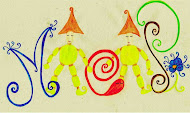
The hut on hen’s legs in which the mythical Baba Yaga dwells is an interpretation of
an ordinary construction popular among hunter-nomadic peoples of Siberia. It was
invented to preserve food supplies against animals. A doorless and windowless log
cabin was built upon supports made from the stumps of two or three closely growing
trees cut at the height of eight to ten feet. The stumps, with their spreading roots,
resembled chicken legs. The only access into the cabin was via a trapdoor in the
middle of the floor. Bears are strong, smart and stubborn enough to break into any
door, but they couldn’t use a ladder or climb a rope to reach the trapdoor.
A similar but smaller construction was used by Siberian pagans to hold figurines of
their gods. Recalling the late matriarchy among Siberian peoples, a common picture
of a bone-carved doll in rags in a small cabin on top of a tree stump fits a common
description of Baba Yaga, who barely fits her cabin: legs in one corner, head in
another one, her nose grown into the ceiling.
There are indications that ancient Slavs had a funeral tradition of cremation in huts
of this type. In 1948 Russian archaeologists Yefimenko and Tretyakov discovered
small huts of the described type with traces of corpse cremation and circular fences
around them; yet another possible connection to the Baba Yaga myth.

Nenhum comentário:
Postar um comentário